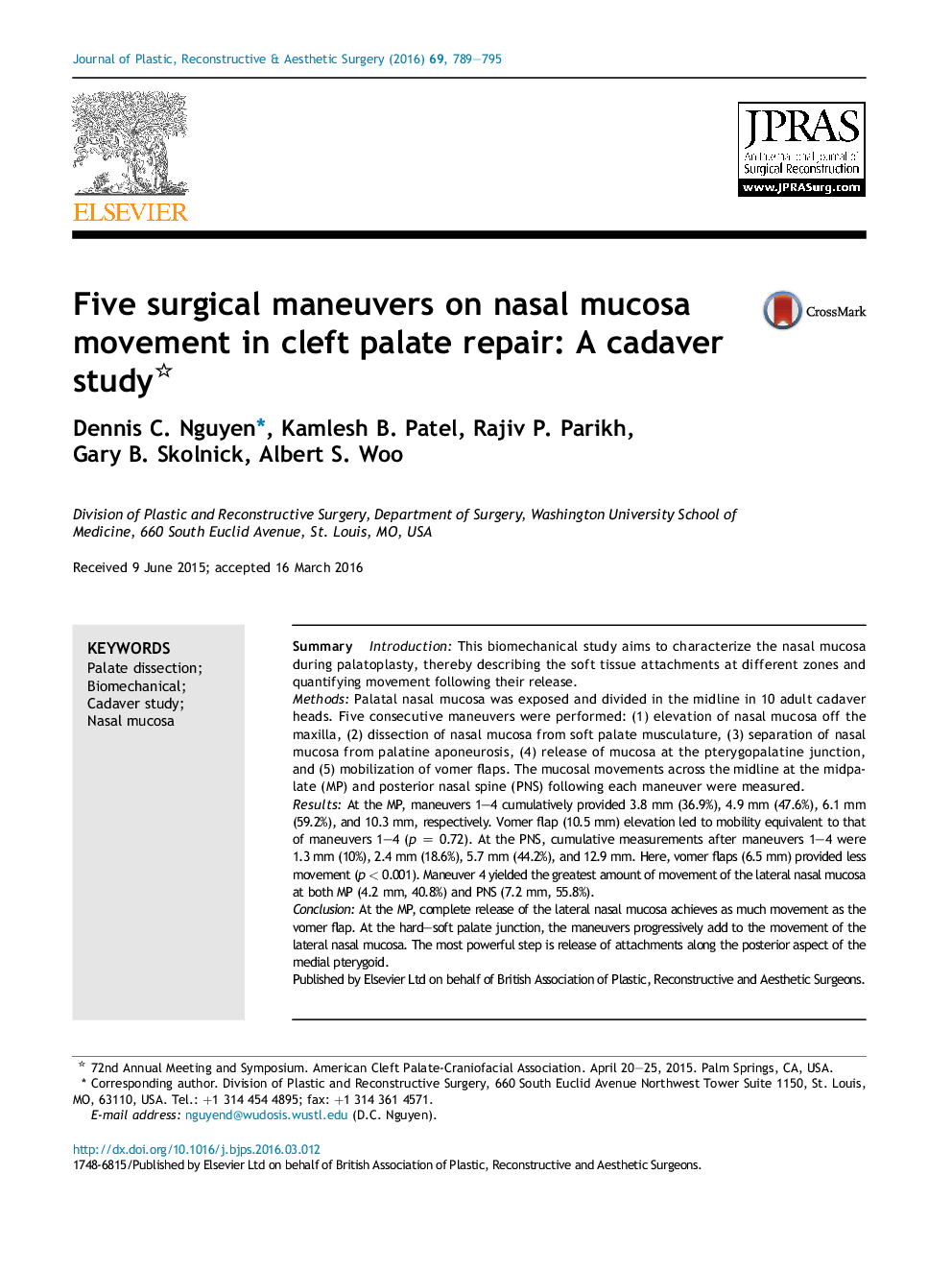| Article ID | Journal | Published Year | Pages | File Type |
|---|---|---|---|---|
| 4117218 | Journal of Plastic, Reconstructive & Aesthetic Surgery | 2016 | 7 Pages |
SummaryIntroductionThis biomechanical study aims to characterize the nasal mucosa during palatoplasty, thereby describing the soft tissue attachments at different zones and quantifying movement following their release.MethodsPalatal nasal mucosa was exposed and divided in the midline in 10 adult cadaver heads. Five consecutive maneuvers were performed: (1) elevation of nasal mucosa off the maxilla, (2) dissection of nasal mucosa from soft palate musculature, (3) separation of nasal mucosa from palatine aponeurosis, (4) release of mucosa at the pterygopalatine junction, and (5) mobilization of vomer flaps. The mucosal movements across the midline at the midpalate (MP) and posterior nasal spine (PNS) following each maneuver were measured.ResultsAt the MP, maneuvers 1–4 cumulatively provided 3.8 mm (36.9%), 4.9 mm (47.6%), 6.1 mm (59.2%), and 10.3 mm, respectively. Vomer flap (10.5 mm) elevation led to mobility equivalent to that of maneuvers 1–4 (p = 0.72). At the PNS, cumulative measurements after maneuvers 1–4 were 1.3 mm (10%), 2.4 mm (18.6%), 5.7 mm (44.2%), and 12.9 mm. Here, vomer flaps (6.5 mm) provided less movement (p < 0.001). Maneuver 4 yielded the greatest amount of movement of the lateral nasal mucosa at both MP (4.2 mm, 40.8%) and PNS (7.2 mm, 55.8%).ConclusionAt the MP, complete release of the lateral nasal mucosa achieves as much movement as the vomer flap. At the hard–soft palate junction, the maneuvers progressively add to the movement of the lateral nasal mucosa. The most powerful step is release of attachments along the posterior aspect of the medial pterygoid.
